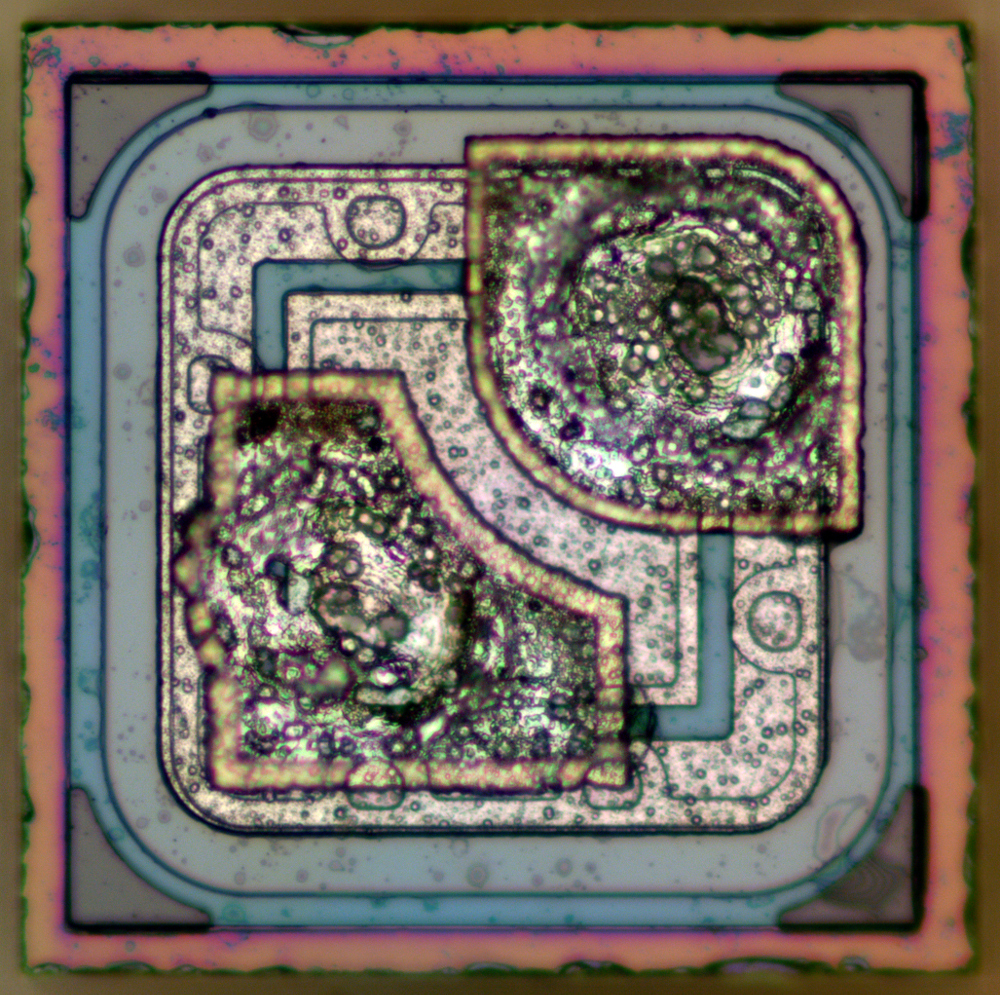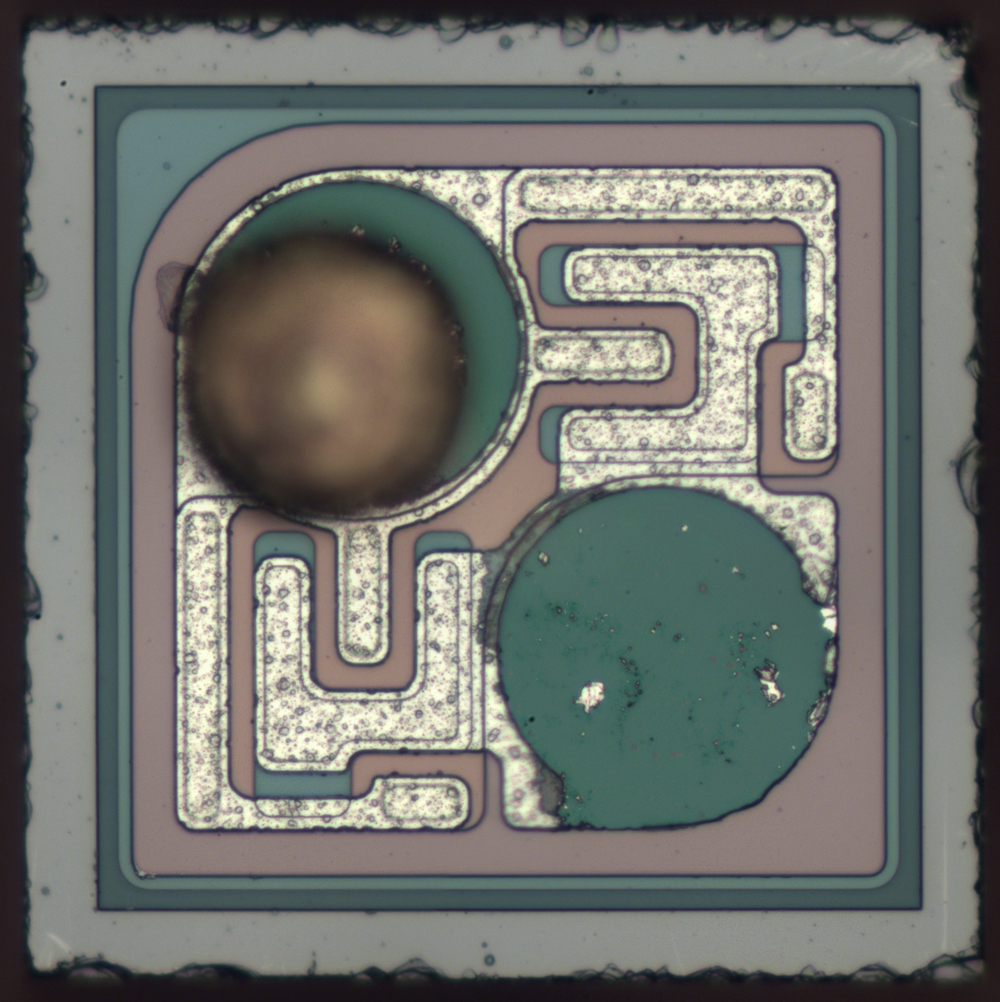January 23, 2015
MC34063 : Weekend die-shot
MC34063 is by far the most widespread DC-DC switching regulator.
Read more →
January 8, 2015
Noname MMBT3904 - npn BJT transistor : weekend die-shot
On the first glance it looks very similar to NXP PMST3904, but topology is clearly redrawn. Notice sketchy borders of metalization - apparently they were using lift-off process for metalization instead of plasma etching. But for discrete transistors this might still be acceptable for good yield.Die size 290x291 µm, which is slightly larger than NXP's one.
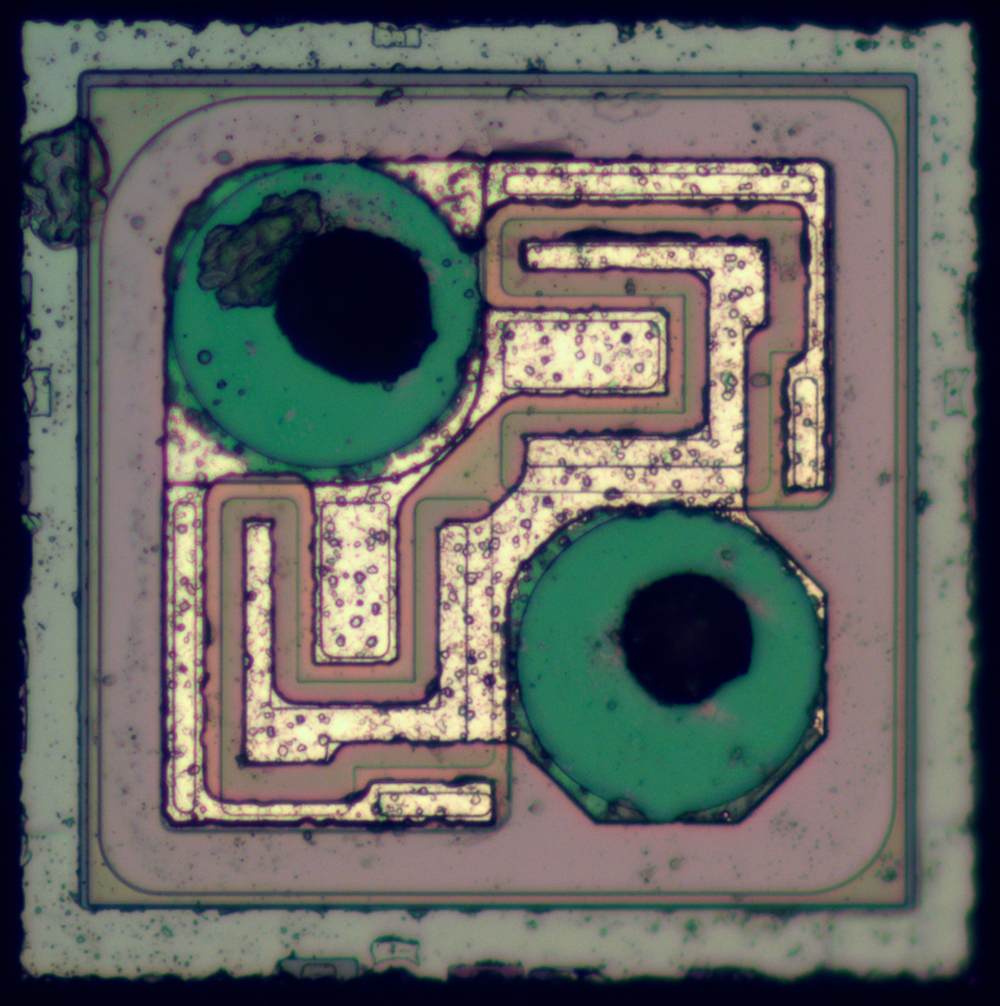
January 8, 2015
December 21, 2014
KR1818VG93 - FDD controller : weekend die-shot
Enthusiasts started yet another reverse engineering project of KR1818VG93 - FDD controller manufactured in USSR times. Presumably it has some compatibility/similarity with FDC1793-02 - this will be figured out.Die size 4817x4794 µm, 6µm NMOS technology.
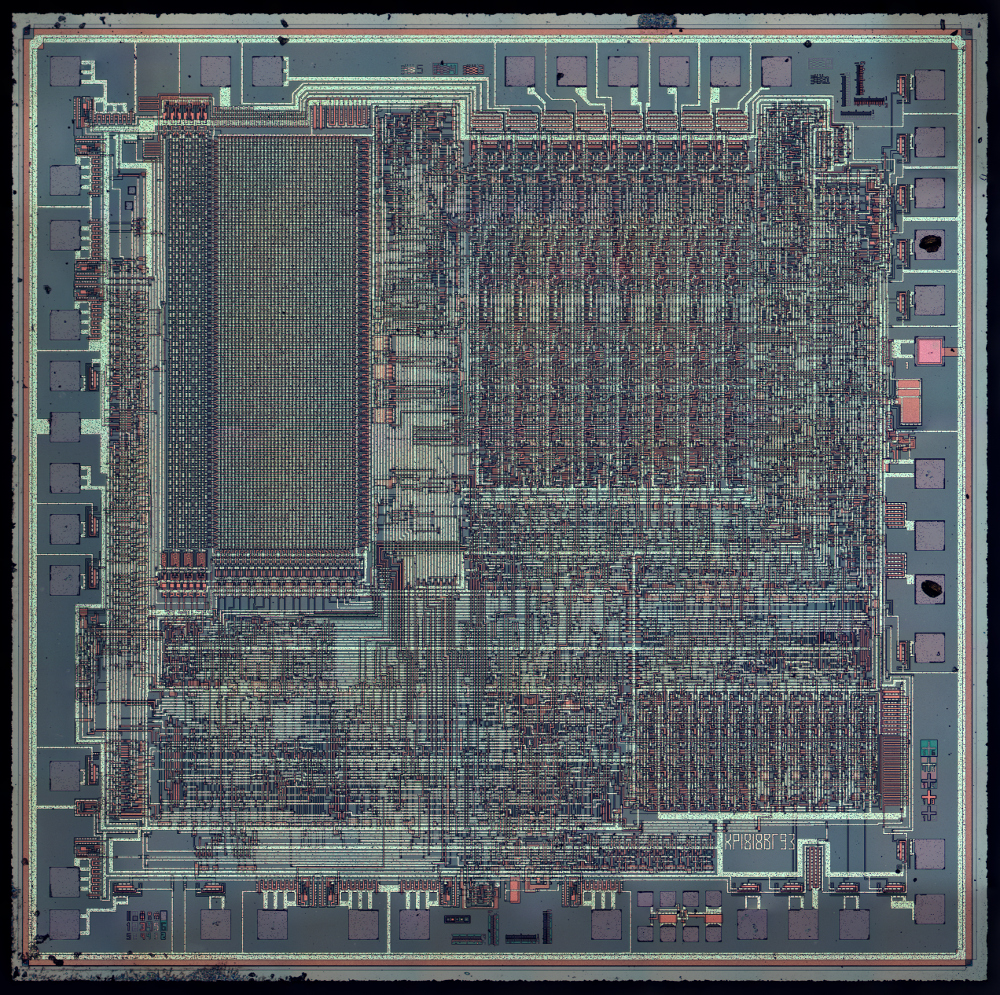
Read more →
November 17, 2014
Torex XC6206 - CMOS LDO : weekend die-shot
Torex XC6206 is a popular and really tiny CMOS LDO, especially if you compare it to older bipolar ones, which were magnitude larger. 250mA LDO in SOT-23 might be hard to believe at first.Datasheet mentions "laser trimming" but we see voltage set via mask and 2 fuses for fine tuning. It is possible though that they have common values set in mask (like this 3.3V one) , and rare voltages laser trimmed.
Die size 500x356 µm, 500nm technology.
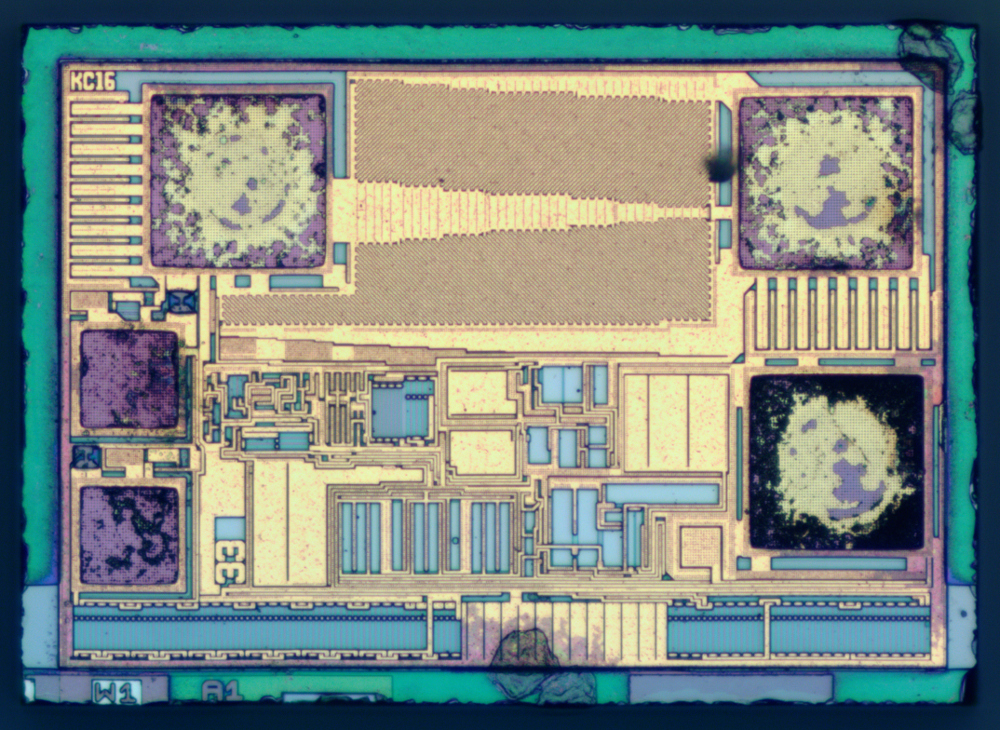
Read more →
November 10, 2014
DIP 10Mhz Quartz oscillator based on Seiko NPC HA5022A3 : weekend die-shot
Seiko NPC HA5022A3 contains internal load capacitors, oscillator with amplitude limiting (for reduced power consumption) and optional frequency divider.Die size 976x770 µm.
Quartz crystal is mounted on springs - in order to reduce impact of vibration on oscillation stability and to make it's damage less likely:
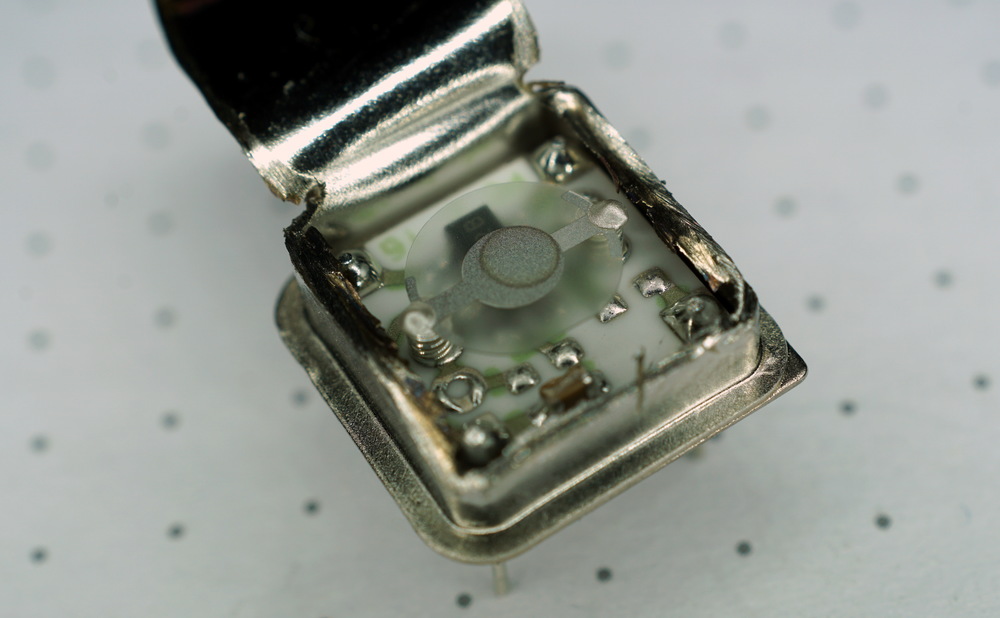
There is an oscillator IC soldered on the ceramic PCB, as well as 0.01uF power supply decoupling cap. It seems we need to go deeper:
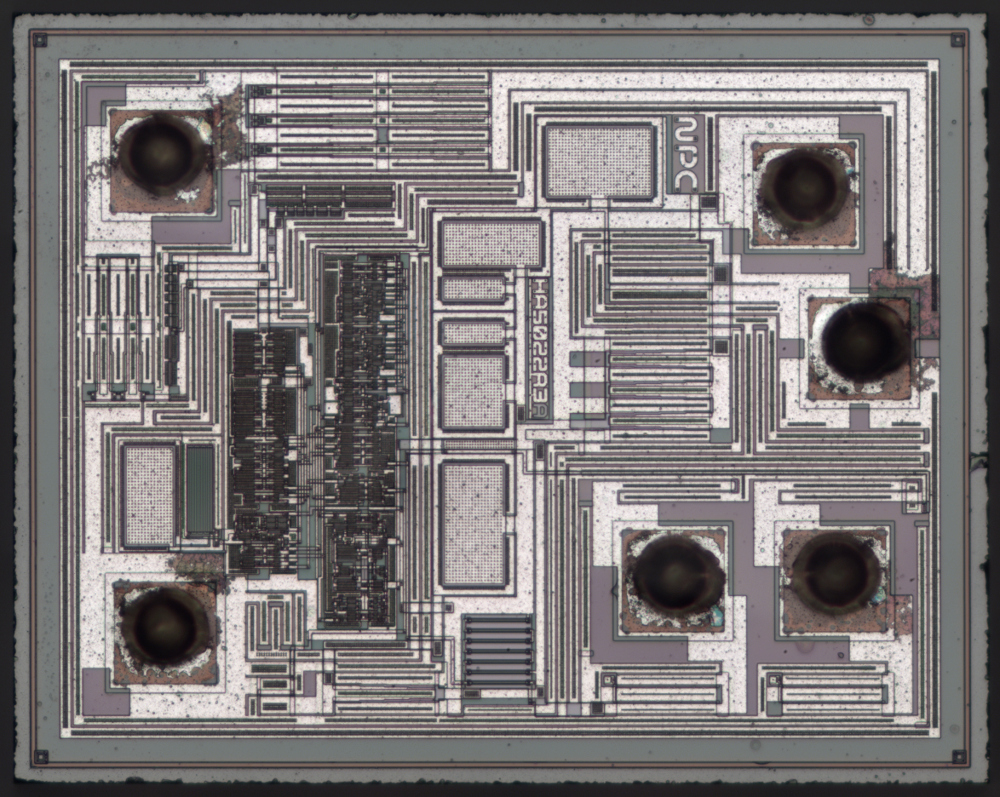
November 4, 2014





